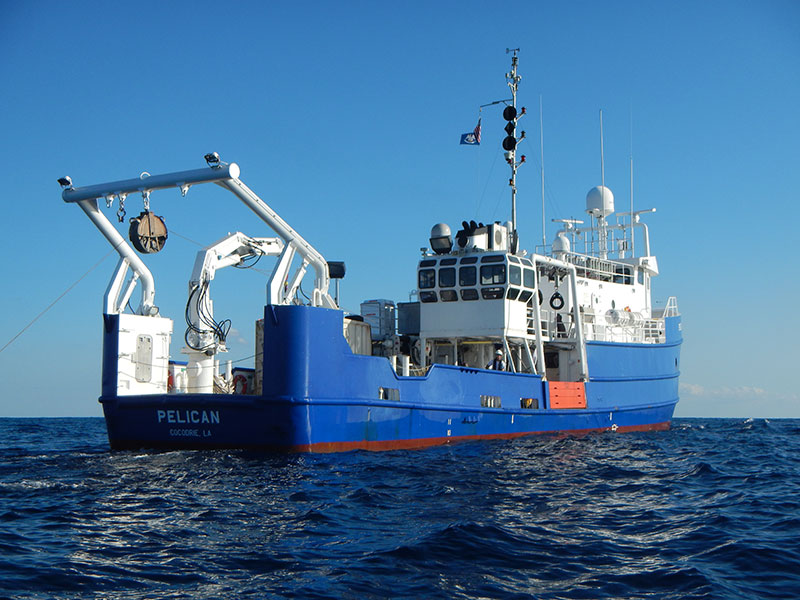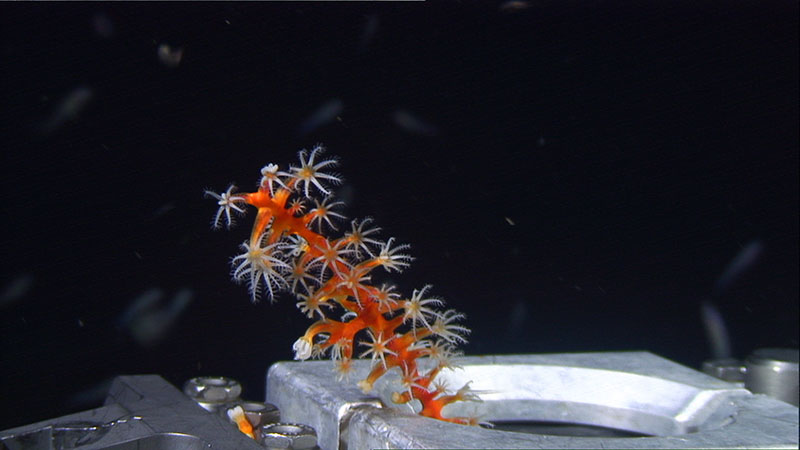
R/V Pelican: April 26–May 11, 2019
R/V Southern Journey: May 17–26, 2019
By Santiago Herrera, Ph.D., Assistant Professor and Project Lead, Lehigh University

Figure 1. Map of study sites in the northwestern Gulf of Mexico. Image courtesy of Santiago Herrera. Download larger version (jpg, 2.4 MB).
This is the first year of a five-year study to investigate connectivity of key coral, sponge, and fish species between shallow and mesophotic coral ecosystems of the Flower Garden Banks National Marine Sanctuary and its proposed expansion areas to the east (Figure 1). Our study is funded by NOAA's National Centers for Coastal Ocean Science and Office of Ocean Exploration and Research.
Mesophotic coral ecosystems are found at depths from 30–40 meters (98–131 feet) to over 100 meters (328 feet) in the Gulf of Mexico that are characterized by living in low-light conditions and are populated with organisms typically associated with shallow coral reefs (such as corals, macroalgae, sponges, and fishes), as well as species unique to mesophotic depths or deeper.
In April 2019, we will begin our first field season. We will be conducting two research cruises using two separate vessels, the R/V Pelican (owned and operated by the Louisiana Universities Marine Consortium; Figure 2) from April 26–May 11, 2019, and the R/V Southern Journey (owned and operated by NOAA’s National Marine Fisheries Service) from May 17–26, 2019. A total of 14 scientists and technicians will be on the Pelican and 4 scientists and technicians will be on the Southern Journey.

Figure 2. The R/V Pelican, owned and operated by the Louisiana Universities Marine Consortium, is one of two vessels that we will be using this field season. Image courtesy of Arne Diercks (University of Southern Mississippi). Download larger version (jpg, 7.2 MB).
On the Pelican, the science team will focus on:
On the Southern Journey, the scientists and technicians will be focused on collecting our target fish species: Red Snapper Lutjanus campechanus and Tomtate Haemulon aurolineatum. We will use bandit reels, sabiki rigs, or small chevron traps to collect these fishes. We will use a minimal soak time (3–5 minutes for hooks and approximately 20 minutes for traps) to ensure that we will be able to release all non-target fish species. These fishes will be collected for genetic and chemical analyses.

Figure 3. Scientists collecting the sea fan, Swiftia exserta, with a remotely operated vehicle. Image courtesy of Santiago Herrera and Oceaneering International. Download larger version (jpg, 2.2 MB).